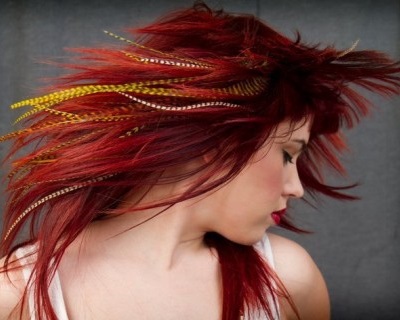Different hair types are one thing, now there are different hair extensions for each and every hair type! Various hair extension types are listed in this article.
Types Of Hair Extensions
Your hair defines you! But what if you have poorly kept hair or are balding and want to see some changes quickly? Or what if you want to have longer hair for a general occasion? Hair extensions are your solution! These are worn by most women as a cure to thinning of hair or to give a more voluminous appearance to the hair or just because it is style statement. Other people get hair extensions to increase length of the hair so that their highlights or lowlights are visible. It is better you research this before ending up terribly disappointed because it is a harder task taking it off than putting on! Why, you must let a professional do this is all for the possible reasons – if done improperly then it might fall off or if it gets tangled in your hair, you might need to cut it off. There are so many reasons to get a hair extension, but what are the types?

Hair Extension Types
Clips
-
They give your hair more volume, length, texture and colour too and can be used on any type of hair whether straight or wavy.
-
You can clip it onto your hair. Part the hair starting from the nape of the neck. Open the clip facing the scalp and start clipping from the bottom and work your hair up your head.
-
Clip it onto your hair and the number of clips you want to add depends on how voluminous you want your hair to look.
-
Clips can be worn all day long, but remove it before you go to bed so that your hair doesn’t gets tangled. They are made of human hair and are not expensive.
-
The advantages of clips are that a professional is not required for clip extension as they are easy to clip on and remove, don't have any damaging glue and they are affordable.
Weaves
-
They are mostly made of human Afro hair and can last about 2 months without changing it after which the wefts become loose.
-
Your natural hair is corn rowed and the new hairpiece is sewn into place. The weft (weave) can be glued into place too. The hair is parted and the new hair is glued to the hair just below the parting.
-
This is a safe method, but removal needs to be done by a professional. But the hair looks gentle and natural with this kind of hair extension. It is one of the most effective forms of attaching new hair to your original hair.
Bonding/ Sealing
-
Your natural hair is parted into sections and the extensions are plaited or braided into this.
-
A bonding solution is applied so that the hair stays in place and it seals the extension around the hair.
-
The bonds start to loosen after about 4 months and need to be replaced.
-
This must be done by a professional otherwise you run the risk of damaging your hair and the extension and your natural hair will look uneven.
-
These are also called pinch braid extensions.
Fusion or Integration
-
This is a very long process and definitely requires professional help!
-
In this process, the extensions used comprise around 20-50 strands of the extensions that happen to have a warm protective glue made of protein.
-
A plastic with a hole separates the hair to keep them from touching the scalp. The extensions have to be pulled out from this hole in the plastic.
-
Each piece of your hair is then attached with glue to the hair extension.
-
A smooth bond is thus formed between the natural hair and the extensions.
-
A tip to remember is that before attaching the extensions, you must properly wash and dry your hair. And make sure that you don’t use conditioner as this will prevent the extensions from sticking to your hair.
-
Removing such extensions can be quite a tedious process and hence must be performed by a professional only.
-
This method is used for women whose hair is thinning or they are undergoing some cancer therapy (and hence losing hair due to this).
See also
More from iloveindia.com
- Home Remedies | Ayurveda | Vastu | Yoga | Feng Shui | Tattoos | Fitness | Garden | Nutrition | Parenting | Bikes | Cars | Baby Care | Indian Weddings | Festivals | Party ideas | Horoscope 2015 | Pets | Finance | Figures of Speech | Hotels in India : Delhi | Hyderabad | Chennai | Mumbai | Kolkata | Bangalore | Ahmedabad | Jaipur
- Contact Us Careers Disclaimer Privacy Policy Advertise With Us Lifestyle Sitemap Copyright iloveindia.com. All Rights Reserved.

